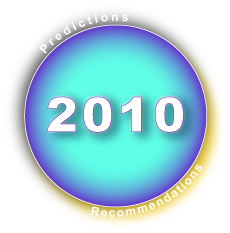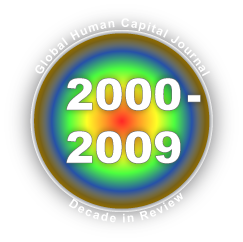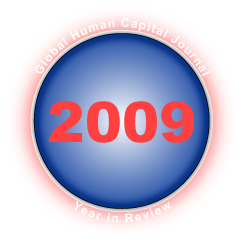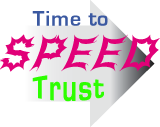By Christopher Rollyson  Preview: Social Networking Conference Miami 2010 will have the usual strong lineup of enterprise 2.0 speakers with the twist of some NFL excitement and mobile social. Here I’ll preview the conference and offer some thoughts about the four sessions with which I’m involved. Preview: Social Networking Conference Miami 2010 will have the usual strong lineup of enterprise 2.0 speakers with the twist of some NFL excitement and mobile social. Here I’ll preview the conference and offer some thoughts about the four sessions with which I’m involved.
Continue reading Preview: Social Networking Conference Miami 2010
By Christopher Rollyson  While I admire many Facebook features, the site is woefully weak in adding value to “Facebook suggestions,” (right) which are those frustrating messages that appear on the upper right column of your Home Page. It would be easy to write off if they were just a waste, but what’s more provocative is that Facebook is missing a huge opportunity, which I’ll discuss briefly here. Secondly, I’ll show that most Facebook members are missing the chance to get some help from this feature, as lame as it currently is. While I admire many Facebook features, the site is woefully weak in adding value to “Facebook suggestions,” (right) which are those frustrating messages that appear on the upper right column of your Home Page. It would be easy to write off if they were just a waste, but what’s more provocative is that Facebook is missing a huge opportunity, which I’ll discuss briefly here. Secondly, I’ll show that most Facebook members are missing the chance to get some help from this feature, as lame as it currently is.
By Christopher Rollyson  Facebook has a bold strategy that mashes up the social graph with the Web—in the service of using digital transactions to develop in-depth understanding of people. This has far-reaching implications for what “public information” about you and your friends may soon look like. It will likely redefine the concept of privacy, so it is definitely a development to watch. Facebook has a bold strategy that mashes up the social graph with the Web—in the service of using digital transactions to develop in-depth understanding of people. This has far-reaching implications for what “public information” about you and your friends may soon look like. It will likely redefine the concept of privacy, so it is definitely a development to watch.
Before I dive into that, however, hats off to the GigaOM team, who have been doing some excellent reporting on Facebook’s “opening up” to the Web. Check them out.
Continue reading Visions of Facebook 2.0
By Christopher Rollyson 2010 Tips for Executive Leadership and Job Search Effectiveness shows how you can get ahead, business-wise and career-wise, by using social networks efficiently.
LinkedIn and Blogging Top the List
 In 2010 Predictions and Recommendations for Web 2.0 and Social Networking, I recommended to executives to increase their Web 2.0 competitiveness because everyone’s skills are improving and you need to outperform to maintain your advantage + the market will not get measurably easier for most people in 2010. Competitiveness will increase. Here I’ll summarize how individual executives can outperform competitors in 2010. In 2010 Predictions and Recommendations for Web 2.0 and Social Networking, I recommended to executives to increase their Web 2.0 competitiveness because everyone’s skills are improving and you need to outperform to maintain your advantage + the market will not get measurably easier for most people in 2010. Competitiveness will increase. Here I’ll summarize how individual executives can outperform competitors in 2010.
Having an effective LinkedIn Profile now involves two best practices, one of which is new: 1) create a strong profile that emphasizes your goals, expertise and past experience (most execs know this) and 2) manage your Profile’s new moving parts (most people don’t know about this). Outmaneuver rivals this year by:
By Christopher Rollyson How Mass Collaboration Is Transforming Company and Culture—Mining Disruption’s Silver Lining
 “We are flying into some turbulence, so please return to your seats and keep your seatbelts fastened while we try to find more favorable winds.” “We are flying into some turbulence, so please return to your seats and keep your seatbelts fastened while we try to find more favorable winds.”
As chronicled in the just-published Decade in Review 2000-2009, the twenty-first century is proving to be volatile and disruptive in every way, and 2010 will continue the trend. Three disruptive forces are converging: the relative value of the Industrial Economy continues to fall as overproduction reigns. Globalization is replete with extras that people at the head table didn’t order. Most imperceptibly yet poignantly, the emerging Knowledge Economy is digitizing communications and changing the economics of knowledge and relationships. Web 2.0 and social networks drive down the cost of communication, which accelerates volatility because when people talk, ideas change and lead to action, and digital conversations happens faster and less expensively. Social networks are rapidly making “the Web” human, thereby attracting an ever-larger portion of all human communications online. In 2009, adoption reached critical mass, ramping strongly among consumers, so many enterprises are following. The Web 1.0 adoption rhythm is very instructive.
Pervasive Web 2.0 also means reexamination or disruption of most areas of life, culture, society, government and business because social networks alter how many and what kind of relationships people have. The impact is similar to Ford’s production line, except it is more powerful: it scales relationships. Large organizations will remain in a profound state of turmoil because they were not built to withstand the volatility these forces are unleashing. Many Fortune 500 companies will be confronted with their survival, and some will not make it. Entire industries will consolidate over the next several years (automotive, airlines, banking, hotels, food, consumer goods…). Web communications mean we consume novelty far more quickly, which curtails product life cycles and leads to ultra-fast commoditization. Companies will require unprecedented innovation to even stay in place. New entrants around the world compete for customers and leverage their lower costs and better innovation processes. And Web 2.0 is still in the early stages of adoption.
This dynamism elevates opportunity and threat for executives and their organizations, so our focus here is to lay out probable milestones for 2010 to assist executives in business strategy and career planning for 2010 and beyond. First, I will lay out predictions, on which I’ll build for my 2010 recommendations. By the way, this follows Year in Review—2009/Social Networking Gains Legs on Heavy Seas and Decade in Review 2000-2009/The Rise of Web 2.0, the New Pervasive Human Space.
By Christopher Rollyson Blogging Quick Launch Guide shows how to Get Started in 60 Minutes—And Spend Less than an Hour a Month.

In my 2010 Predictions for Web 2.0 and Social Networking, I predicted that, within 3 years, executives would be expected to have their thoughts online, chiefly by blogging. If you do not blog, you will lose opportunities to those who do. Web 2.0’s increasing transparency is raising the bar for the amount of yourself you share online. If you’re not available when people need you, they will call someone who is. It’s that simple.
That’s easy for me to say because I have blogged for years, and I know it can be an overwhelming proposition. For every 100 people I mention this to, 90 say that they intend to start, but they never do because it’s not that easy. This Quick Launch Guide will take the mystery out of it and have you online in less than an hour. You’ll also develop a basic content strategy and a realistic publishing schedule. Ready? Let’s go!
By Christopher Rollyson Decade in Review 2000-2009 reveals how relationships on demand are changing economics + The emergence of the Web as creative destroyer of the Industrial Economy
 We need to upgrade the turntable again! When I emerged from undergrad in the eighties, the economy was rotating at 16rpm, which we doubled in the nineties with Web 1.0 to 33rpm. The 2000s had us grooving at 78rpm. Even though one part of me says that this metaphor is poorly chosen because it’s retro, it also reflects another key trend: atomization and mashing up. We need to upgrade the turntable again! When I emerged from undergrad in the eighties, the economy was rotating at 16rpm, which we doubled in the nineties with Web 1.0 to 33rpm. The 2000s had us grooving at 78rpm. Even though one part of me says that this metaphor is poorly chosen because it’s retro, it also reflects another key trend: atomization and mashing up.
The Web is a communications revolution that speeds the consumption of novelty and its economic value, so it is destroying the Industrial Economy’s main value mechanism: value via efficiency and long product life cycles. During the 21st century’s first decade, the overriding trend is that society and markets in which executives have interest saw extensive disruption and change. That meant volatility. As I’ll discuss, this volatility will continue to accelerate because the transaction costs of communication are plummeting, which drives rapid iteration and change in all areas of human society. At the risk of sounding subjective, I believe this will probably be regarded as one of the most disruptive eras in history. Continue reading Decade in Review 2000-2009/The Rise of Web 2.0, the New Pervasive Human Space
By Christopher Rollyson LinkedIn Becomes an Enterprise 2.0 Syndication Machine with API explains LinkedIn API and its significant benefits for the enterprise and the executive.

It finally arrived, late in Q4 2009: LinkedIn is enabling external websites and applications to syndicate in LinkedIn content. If you bear knowledge management scars as I do from the frustration of asking employees to recreate profiles for KM systems, you know that this is a gold mine. Now, you can populate your applications by pulling in LinkedIn profile information. Even better, LinkedIn has not stopped at the Profile: you can also invoke members’ Status Visibility, Connections, Search and Invitations. Read on to learn how your company can become more productive, and how this affects individuals.
By Christopher Rollyson Editor’s Choice of the Global Human Capital Journal—Behind the Curtain—The Best Strategy, Tactics, Case Studies and Insights of 2009
 2009 may have been many things, but boring was not among them! To do it justice, I feel like I have to dock the ship, which has been sailing on turbulent seas, frothed with spellbinding sunrises, sharks, dead winds and tempests. Volatility and surprise have certainly been the watchwords among executives I’ve collaborated with this year, and all indications are that we should look for the same in 2010. However, as dramatic as the environment is, it is only the backdrop for the real story: Enterprise social networking has found its legs and is ramping strongly. Although still tentative, social network investments are becoming pervasive due to the exploding adoption among individuals—and the latter’s impact on markets and firms. As I have been writing since 2005, digital social networking represents unprecedented disruption, opportunity and risk, and I saw many of my predictions play out in 2009. 2009 may have been many things, but boring was not among them! To do it justice, I feel like I have to dock the ship, which has been sailing on turbulent seas, frothed with spellbinding sunrises, sharks, dead winds and tempests. Volatility and surprise have certainly been the watchwords among executives I’ve collaborated with this year, and all indications are that we should look for the same in 2010. However, as dramatic as the environment is, it is only the backdrop for the real story: Enterprise social networking has found its legs and is ramping strongly. Although still tentative, social network investments are becoming pervasive due to the exploding adoption among individuals—and the latter’s impact on markets and firms. As I have been writing since 2005, digital social networking represents unprecedented disruption, opportunity and risk, and I saw many of my predictions play out in 2009.
The 2009 Year in Review gives you the chance to come up to speed rapidly or fill in the holes in your understanding. My perspective comes from intense collaboration with exceptional pioneers of enterprise-focused social networking. Many of the articles come from client work and real situations I encountered this year. I have reviewed 2009’s articles, selected the best and wrapped them in a review and analysis to help you realize where we have been, so you can better plan where you want to go in 2010.
So, throw a log on the fire, pour yourself a nice glass, and let’s dive in.
By Christopher Rollyson Using Facebook with LinkedIn to Speed up the Relationship Life Cycle
 When I suggest to executives using Facebook to accelerate the time to trust for business relationships, I usually get a raised eyebrow or an incredulous stare. However their attitude quickly changes when I ask them to reflect on the last three business lunches they had with prospects and what they talked about. When I suggest to executives using Facebook to accelerate the time to trust for business relationships, I usually get a raised eyebrow or an incredulous stare. However their attitude quickly changes when I ask them to reflect on the last three business lunches they had with prospects and what they talked about.
Meetings with prospective clients usually include sports, culture, family and light politics/news… things that people share on Facebook.
|
|
 Preview: Social Networking Conference Miami 2010 will have the usual strong lineup of enterprise 2.0 speakers with the twist of some NFL excitement and mobile social. Here I’ll preview the conference and offer some thoughts about the four sessions with which I’m involved.
Preview: Social Networking Conference Miami 2010 will have the usual strong lineup of enterprise 2.0 speakers with the twist of some NFL excitement and mobile social. Here I’ll preview the conference and offer some thoughts about the four sessions with which I’m involved.








